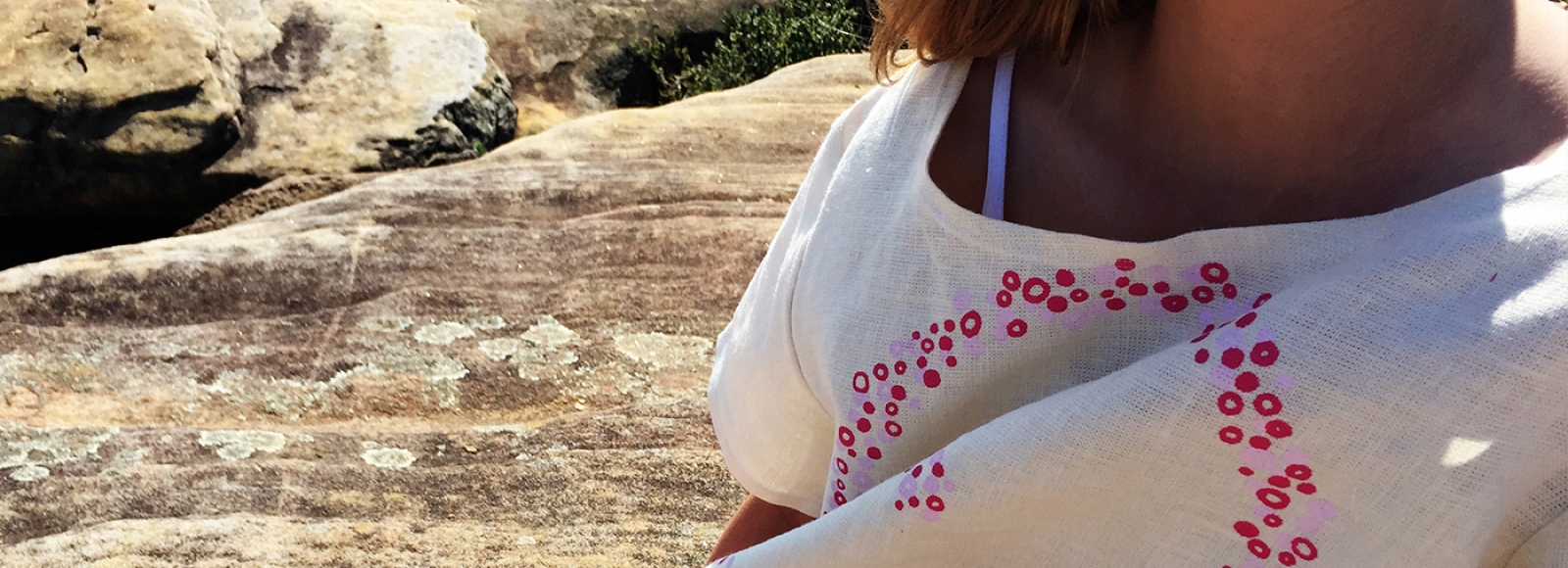
Cynden Adams
Cynden Adams has completed a Bachelor of Design at UNSW Art & Design.
Cynden Adams is a designer with a social conscience. Her ethical perspective permeates the type of work she produces. During her time at UNSW, Cynden developed a range of projects that remind consumers that they are part of a wider world – one plagued by environmental and social challenges.
For the choice&impact project, Cynden developed a clothing line using fabrics that visually communicate information on the environmental fallout of rising ocean temperatures. Cynden’s responsive images were printed on the textiles using thermochromic pigments. This wearable textile collection featured pink motifs representing coral reefs before bleaching occurs. As the temperature of the sun warms each item of clothing, the colour of the printed coral patterns changes from dark to light pink and gradually fades to white. Cynden says a goal was to help remind consumers that the daily choices they make impact – for better or worse – on the natural world.
Cynden’s From Rags project pays homage to the tradition of Japanese textiles artists and designers who repurpose leftover yarn and fabric remnants in aesthetically considered ways. Cynden’s project is a scarf design made from 100% cotton fabric remnants, sourced from within her own household and from the scrap bins of fabric stores. Each newly created item has been shredded, plaited, knotted, and dyed in indigo. The results are a testament to the value of form, function, and sustainability.
For her graduating project, exhibited as part of the Annual 2016 exhibition, Cynden created an apparel collection that she calls Guardian: Made in Cambodia. The goal of the collection is to increase knowledge and awareness of a uniquely Cambodian guardian spirit – the Neak Ta – whose evoked presence enables an acceptable form of worker rebellion to occur. Cynden describes the overall collection as a “visualization of the repetitive piecework of garment factory work and the disruption caused to it by the Neak Ta phenomenon. Open and closed seams, darts and hems have the repetitive qualities of piecework labour, disrupted by dark, ominous forms of natural dyeing techniques, reminiscent of fainting and possession.”
